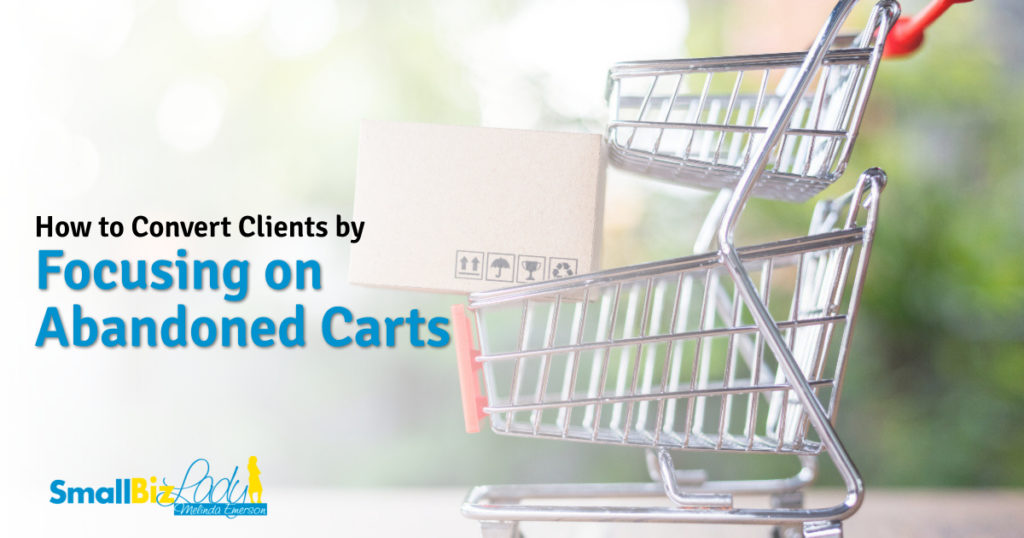How to Convert Clients by Focusing on Abandoned Carts

 On average, only three out of ten shopping carts make it through the full sales process. That leaves a whopping 70% of business sitting in limbo as abandoned carts.
On average, only three out of ten shopping carts make it through the full sales process. That leaves a whopping 70% of business sitting in limbo as abandoned carts.
We see it as an unavoidable fact, but there’s a lot we can do to reclaim those clients. You’ll never convince every client to rethink their decision, but you don’t need to. Even convincing 10% makes a significant impact on your bottom line.
In this post, we’ll look at why shoppers abandon their carts and how you can convert these sales.
Why Do Shoppers Abandon Their Carts?
According to Statista, 41% of shoppers abandoned their purchases because shipping came to more than expected. A further 29% were merely comparing prices. Other top reasons included:
- They changed their minds
- No stock available
- Took too long to deliver
- Wouldn’t arrive in time
- They couldn’t use their preferred payment method
Interestingly, only 18% of shoppers polled went on to buy from a different retailer.
Steps to Take to Prevent Cart Abandonment

Be Clear About Additional Charges on the Product Description Page
If we look at why shoppers failed to complete purchases, there are some clear lessons to learn. The top cause of cart abandonment was that shoppers got a surprise when it came to shipping fees.
Let’s look at this from the client’s perspective. It’s reasonable to charge shipping fees, and most people understand that. The problem is not so much that it costs them money, but that the increase in price was more than expected. They may feel you’re trying to cheat them.
Therefore, it’s wise to consider listing these fees clearly on the product description page. It might pay to include them in the price or provide a straightforward way for clients to earn free shipping. Whichever option you choose, make sure that the client understands what they’ll pay before they checkout.
Consider Adding Price Comparisons
What if you looked up the prices for competitor items and presented them to your clients? It’ll take some technical know-how to tie into competitor deals. There’s also a good chance that it could go wrong if your competitor is holding a killer sale.
If you can pull it off, however, you ensure that the client stays on your site. They can see that you have nothing to hide about your prices, and they’ll probably respect your bravery.
List More Details on the Product Page
Put order details down in black and white. Let them know how much stock you have available. If an item’s out of stock, tell them when the next lot’s coming in and offer to notify them when it does.
Dealing With Cart Abandonment

You’ve done your best and provided every detail you can think of on the page. Still, the client doesn’t complete their checkout. It’s not too late; try employing these tactics.
A Pop-Up Reminder
Yes, we all hate pop-ups, but what about when they save us money? We’ve all seen those ads where you try to leave the page, and they make a cheesy attempt to secure your business with a pop-up and discount.
The reason they use this technique is that it works. You can apply the same process, using a funny or cute saying to grab customers’ attention. Throw in a little discount if that works for you. The worst they’ll do is leave, and you’ve lost nothing. The key here is to let them go after the first attempt.
Retargeting
Would you like to remind your client what they missed out on? Retargeting, when handled correctly, is an effective way of doing just that.

You place a pixel or snippet of code on the relevant page on your site. In this case, it’ll be the checkout page. When your visitor starts the checkout process, they activate this code.
The code can track them when they move off your website. It delivers timely ads in different places online. These may relate to the products they left behind or ones similar to them. The idea is that the ads create extra touchpoints and keep your brand firmly in mind.
Contact the Client
Emailing the customer after a cart abandonment may improve recovery rates by as much as 36%. It’s an effortless contact method that can be set at different trigger points.

The key to getting this right is not to be pushy. You might, for example, ask the client if they require assistance with anything. You could remind them that they left top-rated items in their cart and include some rave reviews if necessary.
Sometimes, a fair discount offer or a code for a free gift or shipping can do the trick. Just ensure that the offer is time-sensitive to get them to act quickly.
How often do you contact them? Twice is a good number. Make the initial contact a day or two after the cart abandonment. Then follow up in about a week. If they’re still not on board, move on to something else.
Final Notes
Cart abandonments are an exciting prospect for the marketer. The client has made part of the buying decision already. They like the product, and they have shown they’ll consider buying from you. This provides more of an opportunity than a completely cold sale, so take full advantage of it.
 About the Author: Oleg Deneka is the founder of Techpricecrunch.com, a platform passionate about e-commerce and online solutions for businesses that aims to be a one-stop-shop for information for all business owners.
About the Author: Oleg Deneka is the founder of Techpricecrunch.com, a platform passionate about e-commerce and online solutions for businesses that aims to be a one-stop-shop for information for all business owners.
Read More
Source

No comments